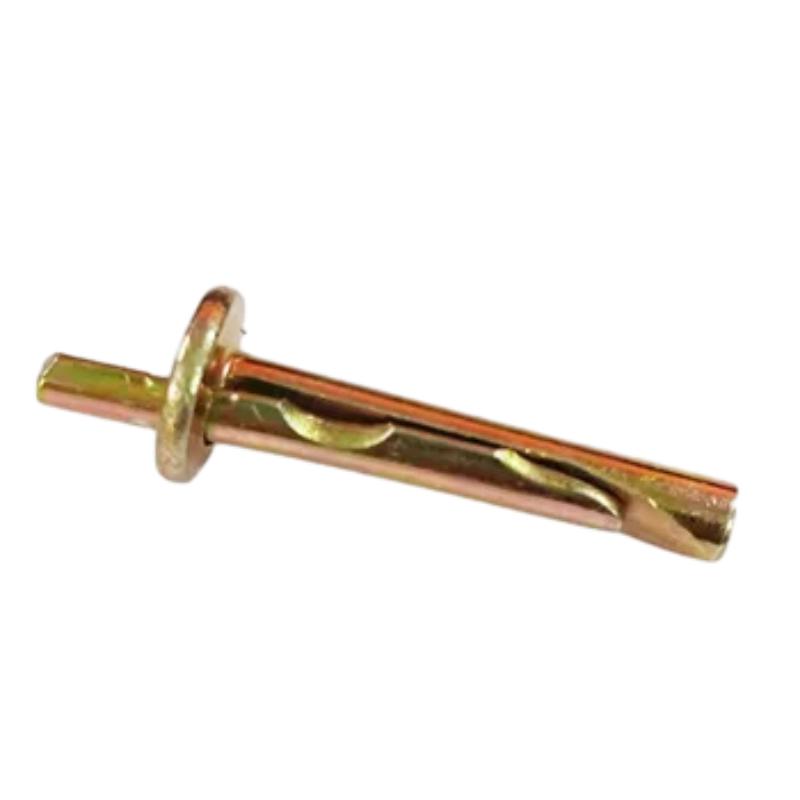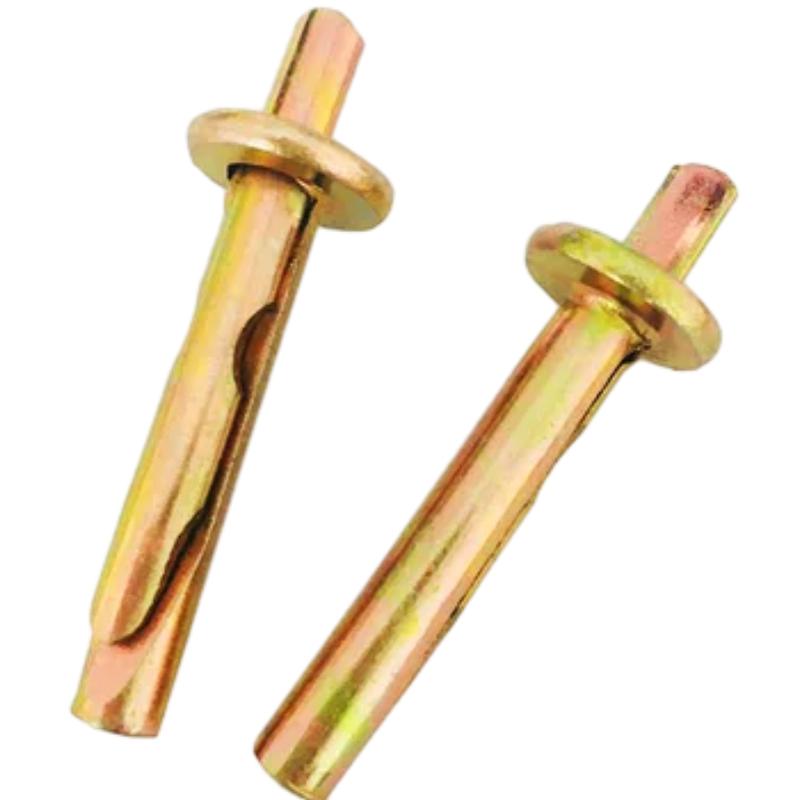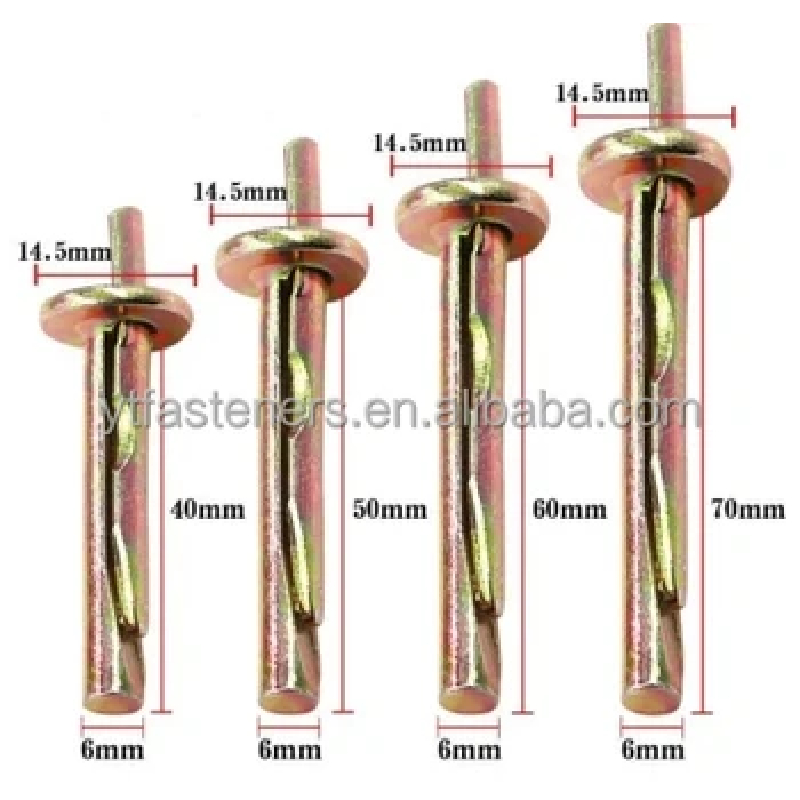Jul . 31, 2025 21:40 Back to list
Chemical Anchor Bolt - Heavy-Duty Concrete Fastening Solution
Chemical anchor bolts—including specialized products like Chemical Anchor Bolt Yellow Zinc Plated Carbon Steel Ceiling Anchor—are revolutionizing the fixings industry, providing enhanced load capacity, superior corrosion resistance, and broad applicability across sectors such as petrochemical, metallurgy, water supply, HVAC, and heavy construction. This comprehensive guide will delve into the latest industry trends, product specs and comparison data, manufacturing process visualization, technical advantages, custom solutions, and real-world applications for chemical anchor bolts and companion systems like , , and .

1. Chemical Anchor Bolt Industry Trends & Market Insights
- Global chemical anchor bolt market in 2023 reached USD 1.87 billion, with a projected CAGR of 5.2% (2024-2029) (Source).
- Rising demand for heavy duty ceiling anchors in seismic retrofitting and energy sector infrastructure.
- Preference shift to yellow zinc plating, carbon steel for increased durability and extended service life in corrosive environments.
- Adoption of s with improved load distribution and performance under variable load scenarios.
- Growing emphasis on ISO 898-1 and ANSI/ASME B18 compliance and third-party testing for critical applications.
2. Technical Parameters & Specification Table
To address diversified application demands, chemical anchor bolts are offered in a range of diameters, lengths, finishes, and materials. Explore below a comparison table summarizing core parameters of leading chemical anchor bolts and ceiling anchoring solutions:
| Product | Base Material | Finish | Diameter (mm) | Length (mm) | Ultimate Tensile Strength (N) | Corrosion Resistance | Certification | Typical Application |
|---|---|---|---|---|---|---|---|---|
| Chemical Anchor Bolt Yellow Zinc Plated Carbon Steel Ceiling Anchor | Carbon Steel (Q235/Q345) | Yellow Zinc Plated | M8–M24 | 80–300 | 50,000–125,000 | 96-240h Salt Spray | ISO 898-1/ANSI | Concrete/Ceiling/Heavy Fixing |
| Chemical Bolt Stainless Steel | Stainless Steel (SS304/SS316) | Polished | M8–M20 | 60–260 | 40,000–115,000 | >1000h Salt Spray | CE/ISO 3506 | Chemical Plant/Marine |
| Heavy Duty Ceiling Anchors | Carbon Steel | Hot Dip Galvanized | M10–M22 | 80–280 | 45,000–105,000 | 120h Salt Spray | ISO 898-1 | Industrial Ceiling/M&E |
| Cement Ceiling Anchors | Alloy Steel | Electro Galvanized | M6–M14 | 50–140 | 28,000–65,000 | 48h Salt Spray | ANSI | Residential/Light Duty |
Comparison: Tensile Strength & Corrosion Resistance
Global Market Application Share for Chemical Anchor Bolt Types (2023)
Service Life Trend: Zinc Plated vs Stainless Steel
3. Manufacturing Process Visualization: Chemical Anchor Bolt Production
The production of chemical anchor bolts, especially the Chemical Anchor Bolt Yellow Zinc Plated Carbon Steel Ceiling Anchor, involves precise manufacturing and rigorous quality control at every stage, ensuring optimal mechanical performance and maximum safety. The full process is certified to ISO 898-1 and ANSI standards.

4. Technical Advantages of Chemical Anchor Bolt Yellow Zinc Plated Carbon Steel Ceiling Anchor
- Exceptional Load Bearing: Up to 125 kN tensile strength, ideal for heavy-duty ceiling mounts and seismic retrofitting.
- Anti-corrosion Yellow Zinc Plating: Passes 96–240 hour salt spray tests (ISO 9227), especially crucial for ceiling anchor bolts in HVAC and water supply.
- Adaptability: Compatible with multiple resin capsules/chemicals (epoxy, vinylester, pure resin). Supports a variety of base concrete grades.
- Precision Machining: CNC finishing achieves ±0.08 mm thread tolerance, guaranteeing stable anchoring force for chemical bolt anchor.
- Industry Certification: Each lot is marked with batch code, and complies with global standards (ISO 898-1, ANSI B18.2.1, CE Mark).
- Service Life: Designed for >15 years in standard industry installations; real-world tests show <8% reduction in integrity after 8 years (see chart above).
- Safety: Each chemical anchor bolt is subjected to random destructive pull tests before shipment (test report download on request).
5. Manufacturer Comparison: Chemical Anchor Bolt Key Players (2023)
| Brand | Main Product | Certifications | Annual Output (pcs) | Global Clients | Lead Time |
|---|---|---|---|---|---|
| YTBolt | Chemical Anchor Bolt Yellow Zinc Plated CS Ceiling Anchor | ISO 898-1, CE, ANSI B18 | 8,000,000 | PetroChina, China Rail, SINOPEC | 7-15 days |
| Hilti | RE 500 Chemical Anchor | ETA, ICC, ISO | 16,000,000 | Shell, Aramco, Vinci | 3-6 weeks |
| Fischer | FIS EM Plus | ETS, CE, ISO | 7,200,000 | BASF, Hitachi, Hochtief | 2-5 weeks |
| Powers | Power-Stud+ SD2 | ANSI, ICC | 4,500,000 | Kiewit, Jacobs | 2-5 weeks |
6. Customized Solutions & Options
- Customized length, head shape (hex, countersunk), and thread metrics upon request.
- Special coatings: hot-dip galvanized, pure nickel, Teflon available for aggressive environments.
- Match for all leading chemical systems (resin capsules, glass or polyester, fast-cure epoxy).
- Laser-engraved identification codes for project tracking and traceability (ISO/EN1090 compliant).
- OEM/ODM logo support, tailored packaging, and document kits for major engineering contractors.

7. Real-World Application Scenarios & Best Practices
- Petrochemical & Refineries: Chemical anchor bolt systems for securing pipelines and machinery in chemical plants, resisting high vibration and chemical attacks. Client: Sinopec, China
- Metallurgy & Power Plants: Anchor ceiling bridges, cable trays; resistant to cyclic thermal stress. Case: Baosteel, heavy ducting (FY2022)
- Water Supply, Drainage Infrastructure: Ceiling anchor bolts for pipe mounting in pump stations, minimize installation time. Project: Beijing Waterworks
- Residential & Commercial Towers: Secure lighting, fire-fighting pipes, HVAC trays to concrete and cement ceilings with certified ceiling anchor bolts.
- Industrial M&E Installation: Heavy machinery suspended anchorings using chemical bolt anchors that provide adjustable load distribution and enhanced safety margin.
Case Study: In 2023, a leading metro project in SE Asia used YTBolt’s chemical anchor bolt (M16 x 200mm) for all main corridor ceilings; after 12 months, no slippage or corrosion detected under 5x design load in quarterly tests.
8. Technical FAQ: Chemical Anchor Bolt, Ceiling Anchors & Installation
9. Delivery, Quality Assurance & Customer Support
- Lead Time: Standard orders (≤100,000 pcs) shipped within 7–15 days globally.
- Warranty: 3-year unconditional replacement for defects; detailed warranty terms available here.
- Certifications: Entire range covered by ISO 898-1, ANSI B18, CE Mark and batch test reports.
- Technical Support: 24/7 engineer hotline, installation videos, and full documentation provided on order.
- Traceability: QR code tracking on all packaging, COC (Certificate of Conformance) per project.
- After-sales: Rapid incident response team, full field inspection available for large projects.
10. References, Further Reading & Industry Leadership
- “Global Chemical Anchor Market by Material (2023-2029),” Markets&Markets
- “ETA–European Technical Assessment for Anchor Systems,” EOTA
- Real user experience & professional FAQ on Eng-Tips Engineering Forum
- Technical journal: “Performance Testing of Chemical Anchor Bolts in Seismic Zones,” ASCE Library
- Additional data sheets, technical reports, and client references available through YTBolt official website.


